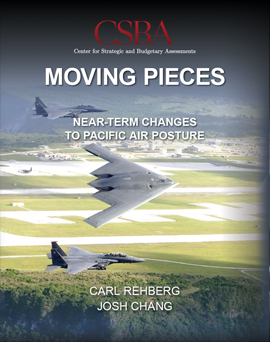
The threat to U.S. and allied air facilities in the Indo-Pacific region is increasing. Current air force posture is vulnerable to adversary first strike due to insufficient posture resiliency—the ability of deployed forces to survive, operate, and regenerate under adversary attack. The recently announced decision to replace the permanent F-15C Eagle squadrons at Kadena Air Base with a rotational deployment only reduces the effectiveness of U.S. Indo-Pacific air forces in the event of a conflict. Defense planning in recent years has outlined recommendations to improve the defense of both facilities and others in the region, but these recommendations have only been partially implemented at best.
In Moving Pieces: Near-Term Changes to Pacific Air Posture, authors Carl Rehberg and Josh Chang propose a new framework for air posture resilience in the Indo-Pacific theater. Rehberg and Chang use Okinawa and Guam as case studies for this new framework, analyzing recent plans and implemented changes to posture on both islands and their current force posture. They then recommend a series of options the U.S. can implement by 2030. Although posture resiliency must constitute the right mix of passive and active defenses, it also requires more emphasis on an understudied element to enhance the survivability of force posture in U.S. Indo-Pacific Command: force structure capabilities for counterstrike. Force posture and posture resiliency call for bold leadership from DoD et al. to implement and accelerate meaningful options now and in the near term to enhance crisis and structural stability. These options will assure U.S. allies and partners, deters adversaries, focus on operational plan execution, and improve warfighting effectiveness. The time to act is now.



























